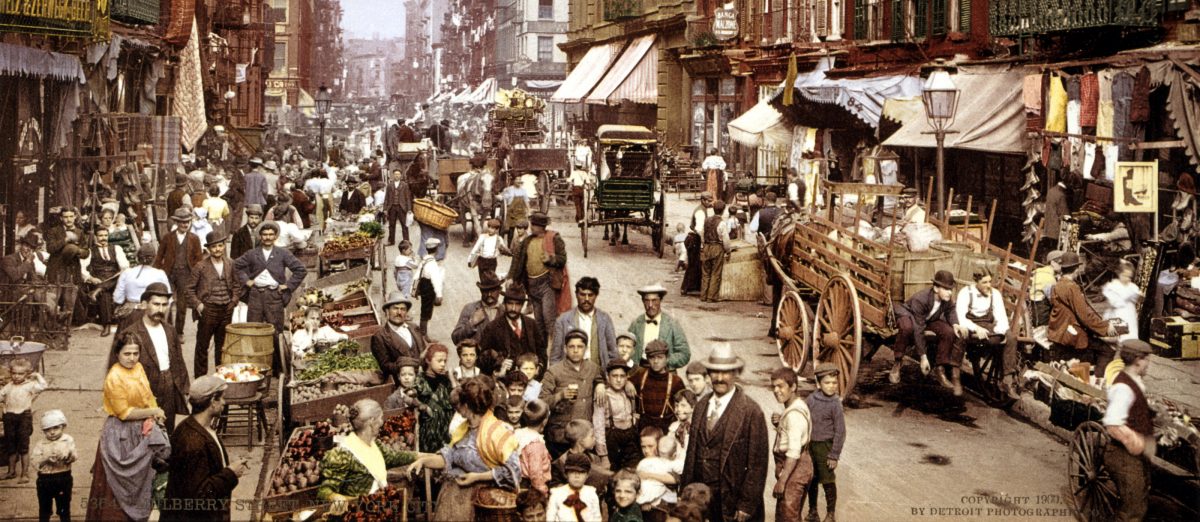I was reading Kim Phillips-Fein’s Fear City at the time news broke of Amazon’s choice of Long Island City as one of its two HQII locations. The Amazon announcement was greeted with a weary acquiescence to the city’s inevitable dominance, as though the Yankees had just signed Bryce Harper. What a contrast to the mood of grim, inexorable decline that permeates Fear City. It reminded me that each chapter of Gotham’s story sets the stage for the next, and that the great city’s essence can be suppressed but not extinguished.
Phillips-Fein’s book is a highly readable narrative of New York City’s brush with bankruptcy in the 1970s. For those who are not municipal budget wonks, the book maintains a good balance between financial detail and narrative flow. I set down to read it as a professional chore but found myself re-immersed in a period I lived through but, in the heedlessness of youth, failed to appreciate as a time of such outlandish grotesquerie. I could almost hear the punk music pounding and smell the tenements burning.
In Phillips-Fein’s telling the fiscal crisis was not just a trauma for the city, but a pivotal triumph for the emerging neoliberal creed of public-sector austerity over an exhausted New Deal progressivism. With banks refusing to lend to the city, and Wall Street refusing to issue more bonds, and the White House refusing to provide federal aid (thanks in no small part to President Ford’s Chief of Staff, Donald Rumsfeld), the city was forced to make draconian cutbacks in public services. Fire houses and day care centers closed, public infrastructure decayed, and perhaps most symbolically, CUNY ended its policy of free tuition. It was the end of expansive, activist urban government.
If Phillips-Fein had continued her story, though, it would be apparent that the neoliberal triumph was not so final. City government did make many important fiscal reforms as the result of the crisis and today it is run with a great deal of financial discipline and transparency. But its ethos of activist municipal government was not eradicated. In the early 1980s the state and city undertook a major reinvestment in its subways under the leadership of Richard Ravitch, and in the late ’80’s Ed Koch launched his massive housing program, which was instrumental in revitalizing large parts of the city. Mayors Dinkins, Giuliani and Bloomberg continued the housing program and made large strides in reclaiming the city’s waterfront and other abandoned industrial areas. Mayor di Blasio launched a universal preschool program. CUNY did not restore free tuition but it survives as a unique urban institution and in many respects is thriving. Urban liberalism in New York City retreated but did not surrender and had reasserted itself within a decade of the crisis.
There is also another sense, I think, in which Fear City’s short-period narrative obscures the meaning of the fiscal crisis. By giving so much attention to the neoliberal critique of the City’s financial practices and its expansive mission, Phillips-Fein inadvertently conveys that they were the underlying causes of the crisis. They were not. The crisis occurred in the midst of a severe national recession, which Phillips-Fein barely mentions, and a long-term restructuring of the nation’s economic geography. The city’s manufacturing base had been hollowed out by firms moving to the suburbs, and more portentously, to the sunbelt.
We now know that industrial capital’s search for the ideal business climate did not end with the sunbelt. The garment makers, the metal shops, and the electrical assemblers that first moved to South Carolina, Georgia and Texas in search of cheaper and more docile labor, lower taxes, and lax environmental standards later found even more favorable locations in Bangladesh, Mexico, and China. Those manufacturing firms have moved on and so has the city, and only the most stubborn industrial revivalists would still argue that manufacturing mens’ and boys’ outerwear is key to New York City’s economic future.
What appeared to many in 1975 as the city’s death throes now appears more like a molting, with the city shedding activities that would not be essential to its regeneration to make way for those that would. The first energy crisis and resulting recession caught the city during that extremely vulnerable time, a vulnerability compounded by some admittedly sloppy budgetary practices resulting in the humiliating fiscal crisis. But the fiscal crisis wasn’t the result of a fundamentally misguided vision of the role of government in a modern metropolis. In fact, it was that expansive vision of urban government that created the cultural, intellectual and physical conditions for revitalization.
